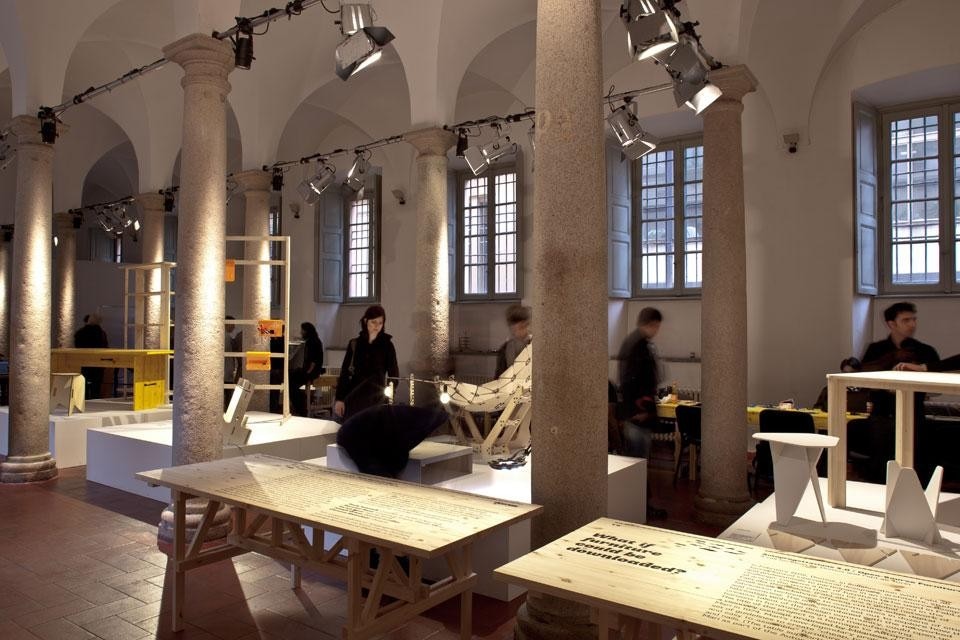Mari's vision of a "democratic utopia" was thus the basis for Autoprogettazione 2.0, a call for open-source design launched by Domus that received responses from 257 designers. Seven of them were selected as prize winners and their designs were shown at the exhibition The Future in the Making held at Palazzo Clerici during Milan's Design Week. The competition set out to examine whether it is possible to take self-made objects as a starting point to rethink the industrial production process of furnishings and maintain high standards of product quality and design content—the very same question that Mari posed back in 1974.
The free instruction booklets Mari distributed at the Galleria Milano have given way to SketchUp files downloaded from the Internet, and his planks and nails have been replaced by 2.0 designers with pantographs, circuit-board milling machines, cutting plotters and 3D printers—the ideal high-tech tools for constructing a furnishing collection for use in FabLabs worldwide, and that can even be made in the FabLabs themselves, triggering a process that fully exploits the design community's intelligence and talent.
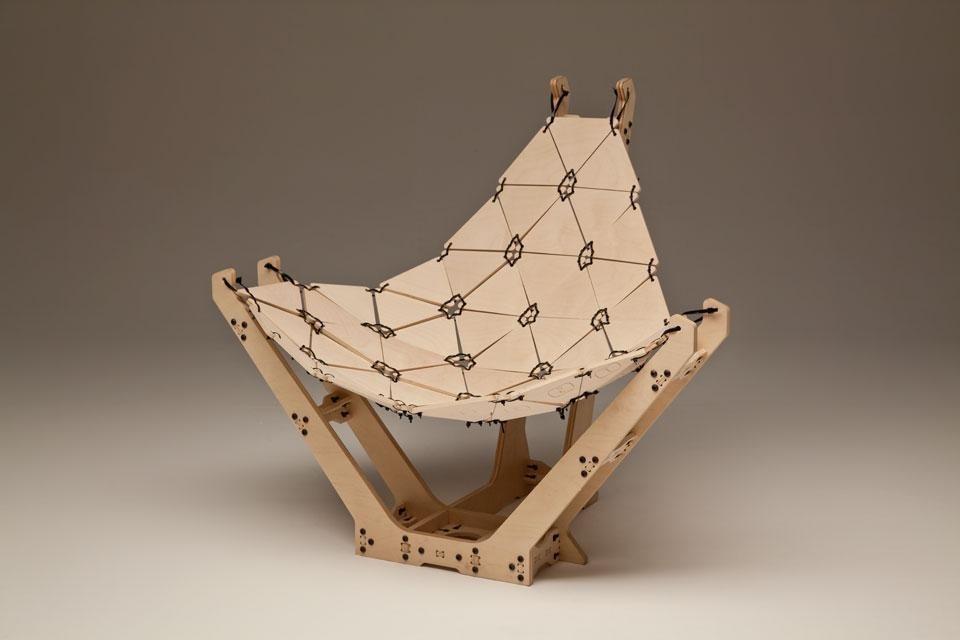
A relaxing seat for chill-out areas, this mini-hammock is made from a single sheet of 10-mm-thick plywood on which makers can relax after a long day's work. It adopts numerical-control cutting to create a wooden mesh, based on the principles of the three-axis milling machine or a laser cut. The seat is positioned 35 cm above the floor and sitters can rest up against the cosy concave back as if cradled in a hammock. The chair is 112 cm wide, including the side supports, meaning a person can lie crossways as on a traditional armchair. The 97-cm depth and 78-cm height keep the barycentre in the middle, even though the supports are projected outwards from the base. As well as slotting together, the components are held with screws, bolts and cable ties. This chair can be made from a single 200 x 155 cm sheet of plywood.
Download the project Chaise Lounge
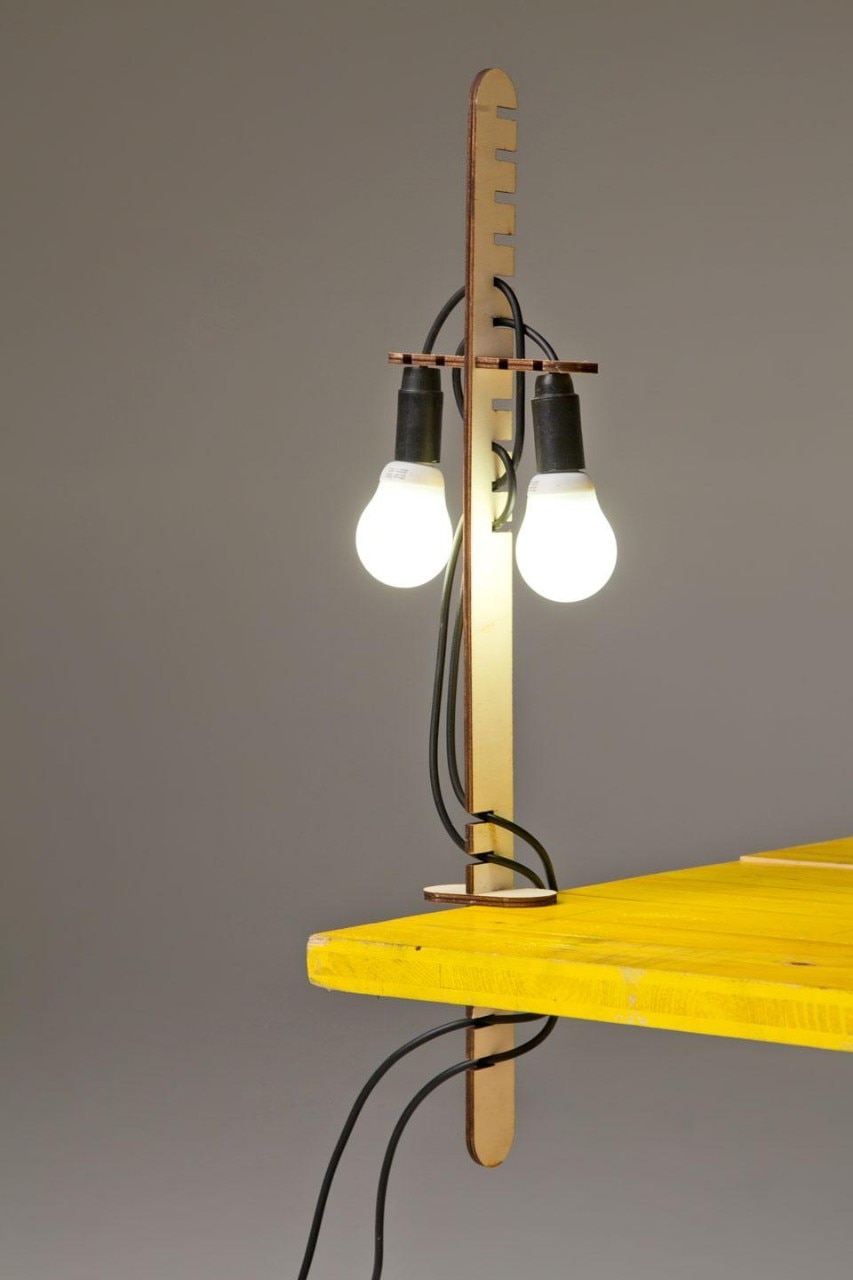
This modular table lamp can be assembled into countless configurations that are optimised for the different types of FabLab uses. The modules are in 3-mm-thick mdf cut with a 2d laser. The Guenda lamp has been developed in three different modules that can be combined to build multiple structural solutions, offering a range of light uses suited to whatever may be the task at hand.
The light source is an energy-saving mini-globe E27 bulb, ideally emitting cold light so as to avoid altering the colours of anything on the workbench. The lamp's electric cable, inserted after the diffuser structure is assembled, must have a diameter of 4 mm. There are two possible assembly methods.
Download the project Guenda
Mari’s vision of a “democratic utopia” was thus the basis for Autoprogettazione 2.0, a call for open-source design launched by Domus that received responses from 257 designers.
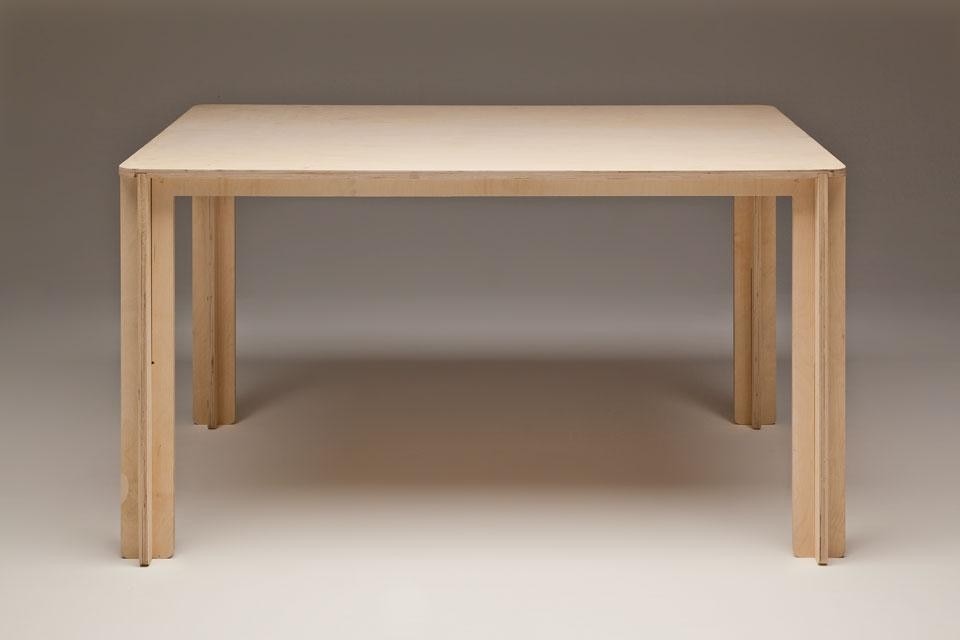
This table/desk (dimensions 90 x 140 x 75 h cm) is made by pantograph-cutting a 15-mm-thick sheet of poplar plywood previously cut to 115 x 200 cm. Four grooves with half the depth of the plywood are milled into the tabletop, into which the leg structures are fixed. The table is designed so that it can be assembled quickly and easily by just one person, without the need for any tools or glue. Assembly starts with the legs, which are slotted one into the other from the top. The tabletop is then placed over them and the legs fit into its X-grooves to guarantee stability.
Download the project Jig Saw
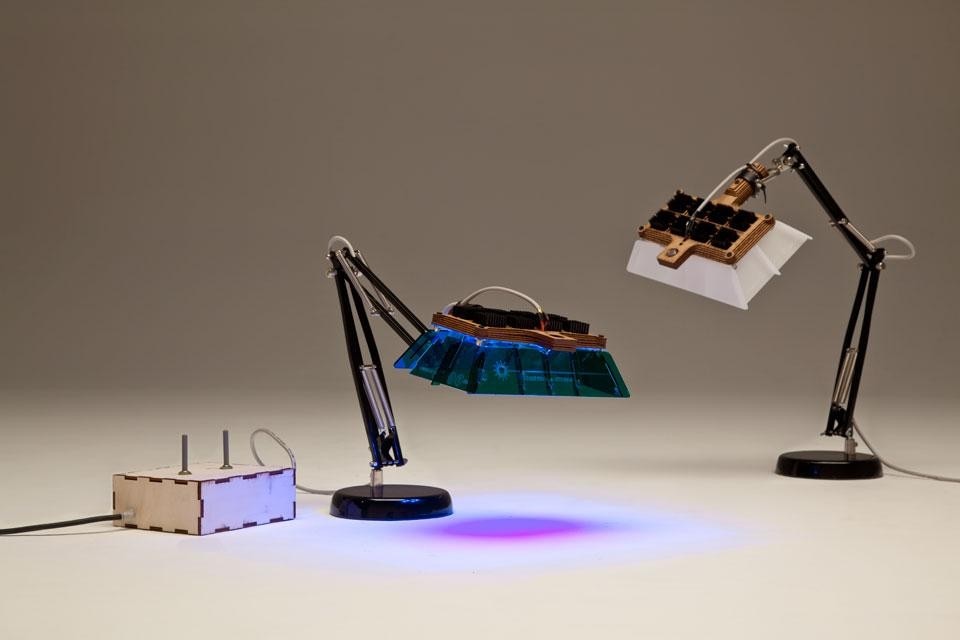
Chimera is a high-performance, open-source lighting system with three different diffusers, all with led bulbs and mounted on standard or existing mechanical supports. Testa Leone will light up a standard workbench requiring high visual comfort. Testa Capra is a scialytic light (no shadow projection) with a 3X magnifying glass. Testa Serpente is a UV drier/polymeriser, perfect for specific workshop operations.
As many standard components as possible have been used to achieve the best combination of performance, production costs and easy construction. All the heads adopt the same processes, the same sheet materials and, wherever possible, the same manufactured components.
Arduino serves as a microcontroller to program different technologies for operator, environment and visual-task interaction.
Download the project Chimera, Testa di Capra
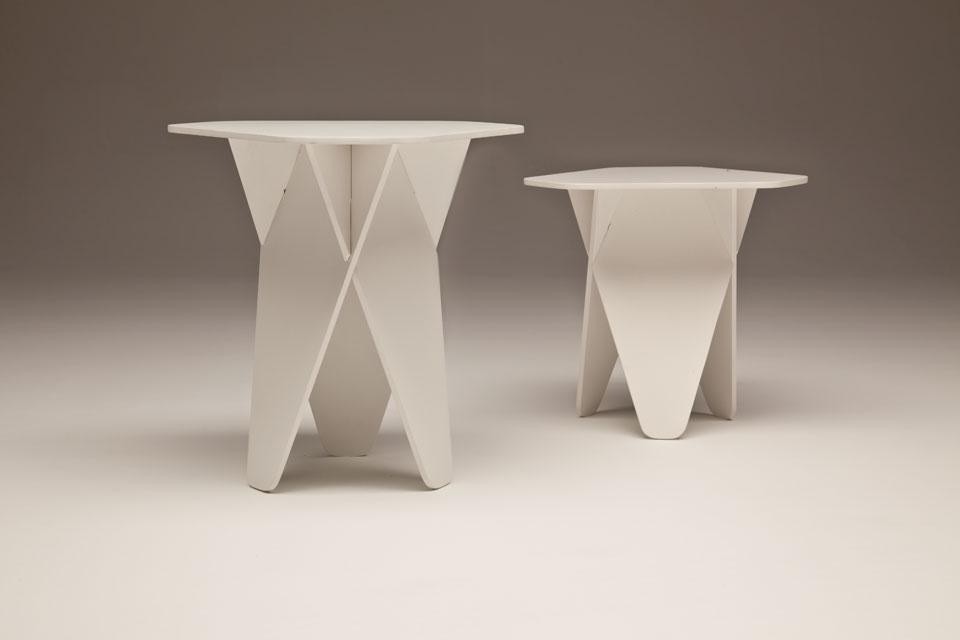
This piece of furniture can be built, stored and shipped simply with little need for manual effort. The core features of this small table, which comes in two versions, are its straightforward construction and the use of just one material. The three elements of the support slot together to produce a solid structure and define the appearance of the table. The top is secured to the three-legged support structure via three screws that are hidden from view from the side. All the table's segments can be produced with combined procedures. The current prototypes were made from 8-mm-thick sheets of plywood and then varnished, but the designer suggests they should ideally be pre-laminated with pvc in different colours, leaving the plywood structure visible around the edges. The two proposed versions differ in their sizes: 41 x 41 x 45 h cm; or 36 x 36 x 36 h cm.
Download the project Wedge Side Table
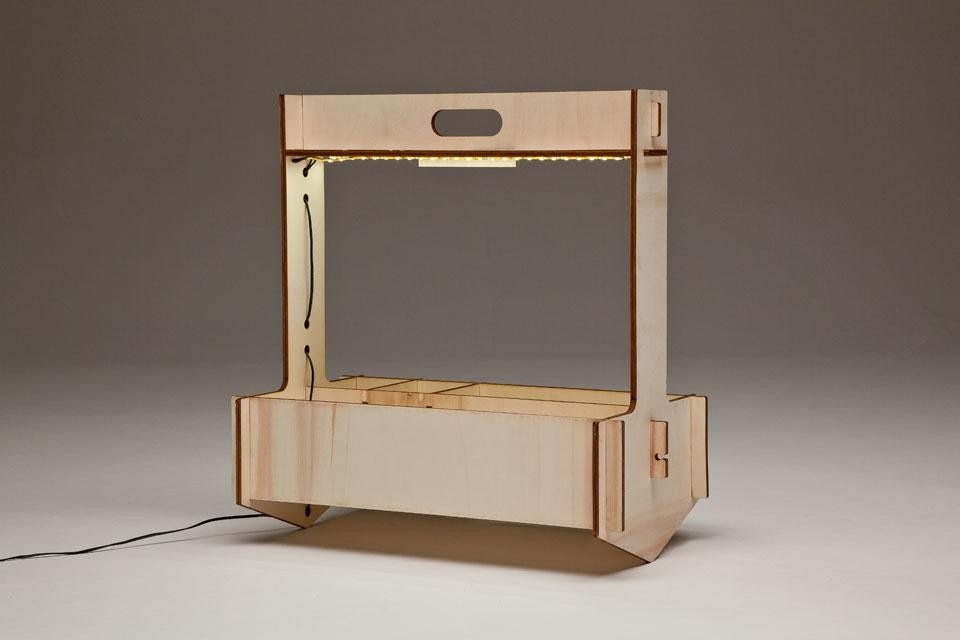
This work lamp not only illuminates the desk but also keeps it tidy. The combination of two functions in a single object optimises table space. The Lightbox design was inspired by traditional toolboxes, here equipped with different-sized compartments and made of 8-mm-thick plywood cut with a milling machine. Its V-shaped base means it can be tilted to either side to direct the beam of light onto the worktop. A fluorescent strip light can be inserted through the two openings in the supports of the handle, which is used to carry the box. The electric cable runs down to the base and is held in a groove in the central partition of the compartments. It measures 565 x 584 x 305 h cm.
Download the project Lightbox
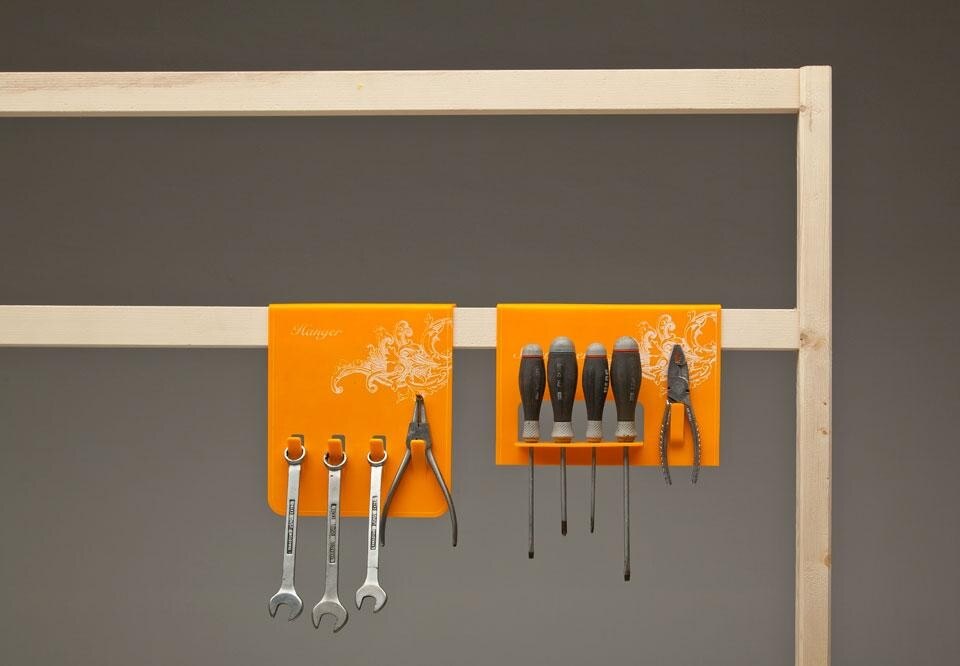
This workshop storage structure is a cross between the cowboy saddlebag and the heavy-duty leather tool belt. The design is based on a wooden structure that can be personalised and erected as a wall rack, corner element or functional partition, serving the workspaces on both sides and adaptable to individual needs or the available FabLab space. An array of different functional units that hold tools of all shapes and sizes are hooked onto this simple framework.
Each unit can then be lifted off the structure and taken to the workstation and hooked onto a table or chair where it is needed. Fir wood was used for both the structure's crosspieces (measuring 2 x 4 cm) and the uprights (measuring 4 x 4 cm). The storage units are made of polished plexiglas that is then sandpapered to remove the shine and give it a worn appearance.
Download the project Gringo


